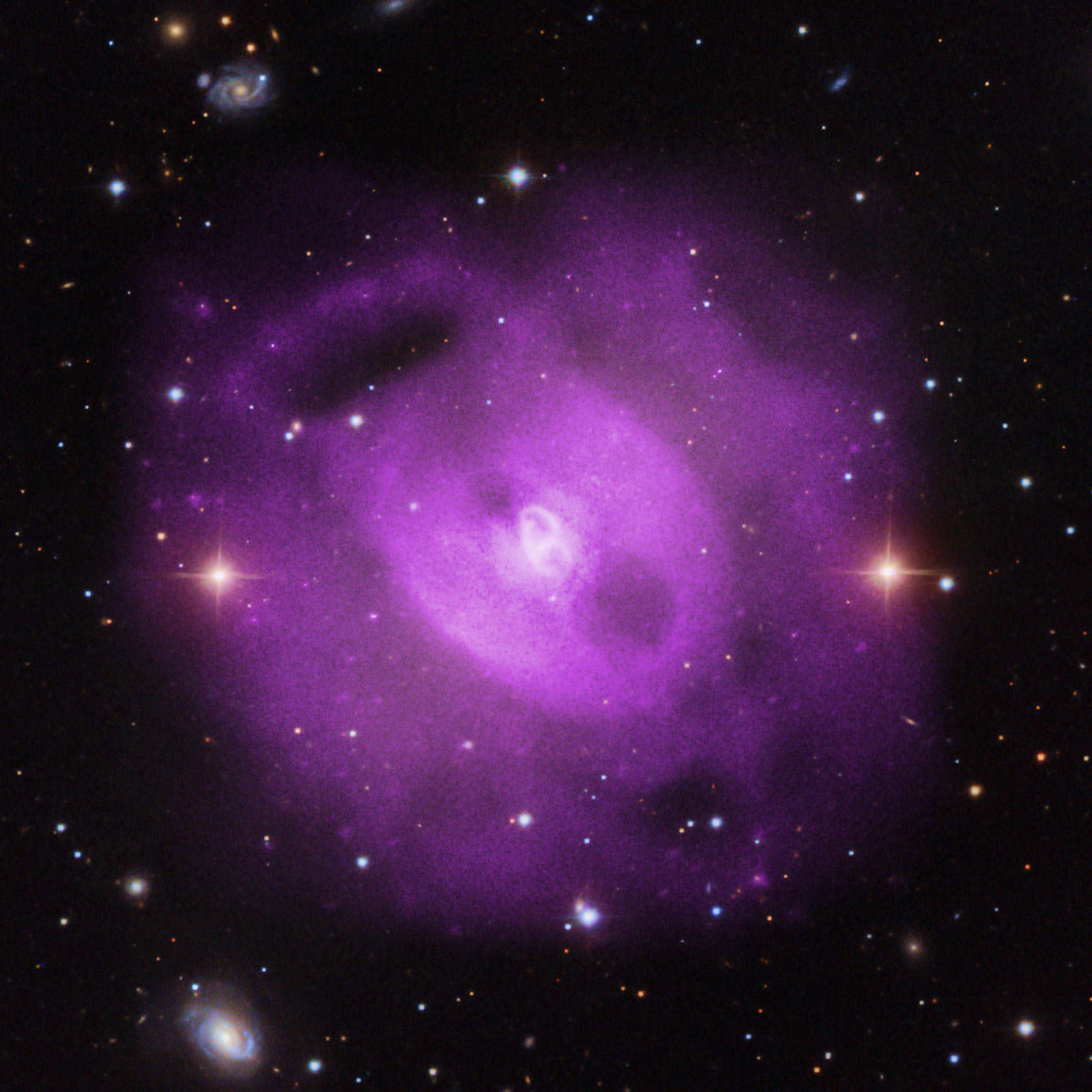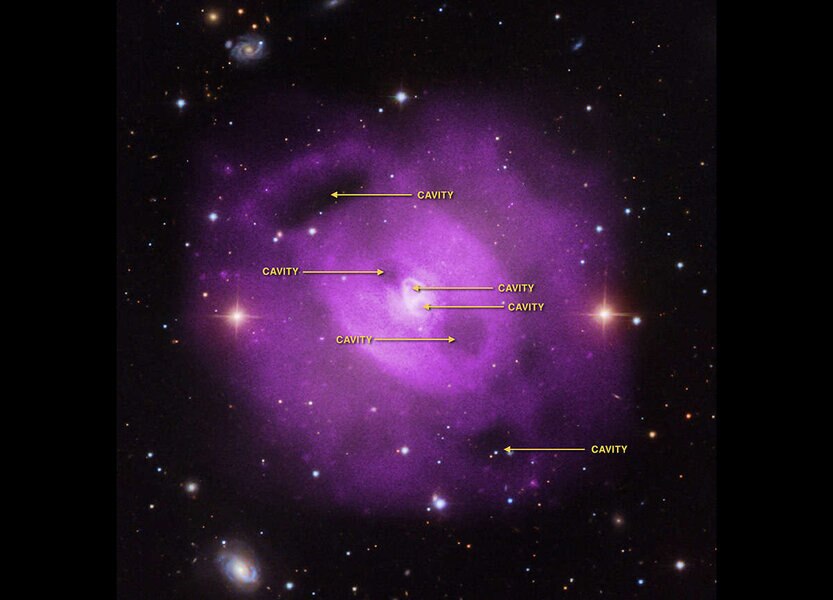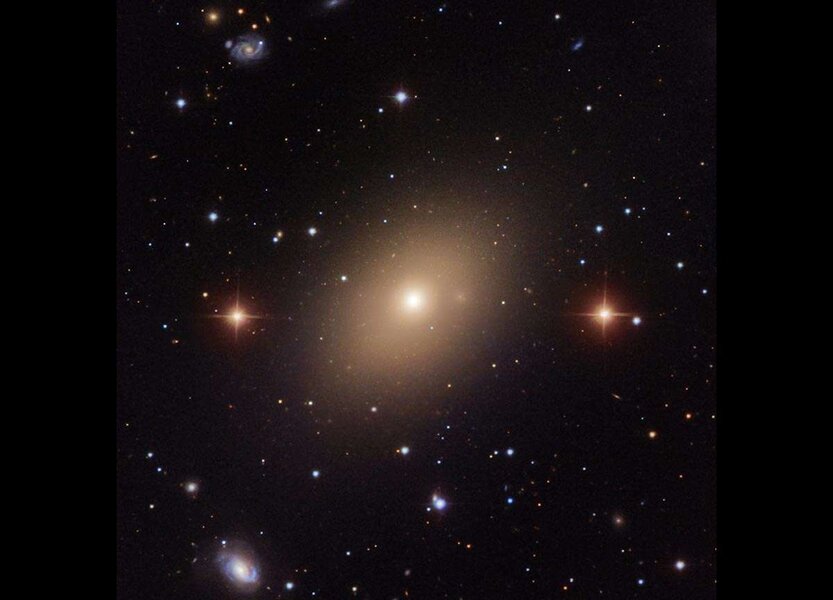Create a free profile to get unlimited access to exclusive videos, sweepstakes, and more!
A supermassive black hole that can't stop erupting

If there’s one thing you learn when you study astronomy, it’s do NOT screw around with black holes.
100 million light years from Earth lies a galaxy called NGC 5813. It’s part of a small galaxy group, a collection of a few dozen other galaxies. When viewed in visible light NGC 5813 looks like any other elliptical galaxy: An elongated puffball with a few hundred billion stars in it.
But it has a supermassive black hole in its heart, one that tips the cosmic scales at 700 million times the mass of the Sun. When you pack hundreds of millions of times the mass of a star into a volume smaller than our solar system you’re dealing with tremendous, mind-crushing forces, phenomena powerful enough to create chaos on a vast scale.
Matter falling into the maw of this monster forms a flat, swirling disk, heated to millions of degrees. Magnetic fields wrap up like tornadoes, ripping material away from the disk and accelerating it to nearly the speed of light above and below the disk. These jets, as astronomers call them, are events of incredible power.
For example: There is a thin gas that fills the space between the galaxies in the group. In the past, and even now, the black hole in NGC 5813 has had epic, colossal eruptions, creating jets that have blasted outward and plowed through that gas. Over the past 100 million years this has happened three times, the twin jets punching into the gas and creating enormous cavities in it.
Deep images taken by the Chandra X-ray Observatory show on just how large a scale this has occurred.
That image shows the hot gas surrounding NGC 5813, which would normally look fairly featureless. However, you can see three sets of cavities blown into the gas. The inner ones make the gas look like a figure-8, although one about 20,000 light years end-to-end. The next set outwards is twice that size, and the ones at the outer edge are about 100,000 light years away from the center — that’s nearly the size of our Milky Way galaxy.
The inner two pairs were known from earlier observations, but this extraordinarily deep X-ray image — a total of about 630,000 seconds, a solid week — shows the outer pair for the first time.
How much energy does it take to create such structures? The total power needed for the outer two pairs is something like the energy emitted from an entire galaxy for one hundred thousand years. Each. That’s equivalent to the energy the Sun emits for a hundred quadrillion years.
Again, each.
The inner cavities are interesting. In their research paper about this, astronomers calculate that the power needed to make them is only about one-tenth as much as the outer ones. Assuming each eruptive event from the black hole is equal (a decent idea) then that means this event is still ongoing, and we’re seeing it relatively early on.
What they think is happening here is that a relatively short-lived event caused the black hole to create the jets, which then slam into the gas, creating immense shock waves thousands of light years across, which in turn heat the gas hugely. This creates the cavity, which is hotter and less dense than the gas around it so it “rises”, that is, moves away from the black hole. That means the oldest cavities are the ones farthest out.
Not surprisingly, this can have ramifications for the entire galaxy. For example, gas in the galaxy can collapse to form stars, but only if it’s cool enough. If it’s too hot the pressure from the gas overcomes its own internal gravity.
Looking at the temperature and density of the gas in NGC 5813, the astronomers calculate that the heat pumped into it from the jets easily balances the rate at which the gas naturally tries to cool, which means this gas cannot collapse to form stars. It will stay hot and turbulent for as long as the black hole keeps episodically erupting.
Again, I’ll remind you that this is all powered by a single object smaller than our solar system. Yet it can disrupt everything around it on a galactic scale.
The Milky Way has a black hole in its center, too. Called Sgr A* (“Sagittarius A star”), it’s only about 4 million solar masses, seriously underweight for a galaxy our size. That means it probably can’t perform stunts like NGC 5813’s black hole, at least not on this scale. At the moment it’s not actively feeding anyway, so we’re safe for now. And even if it were to start gobbling down matter and erupting, it’s unlikely to be anything this powerful.
Still, studying galaxies like NGC 5813 will help us understand how black holes interact with their environment and what kind of feedback they provide into their host galaxies. We know that these supermassive black holes play a critical role as galaxies are born, grow, and change over the eons, so studying them is important in our understanding of the greater Universe.
But sometimes, when I see Sagittarius rising over the horizon, I cast my eye toward the Milky Way’s center that lies in that direction, and wonder about our own black hole. Did it once blast out soul-numbing amounts of energy, creating jets and cavities and X-ray emission visible from hundreds of millions of light years away?
The answer is almost certainly yes, but it was long, long ago. And for that I’m happy.





























